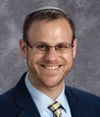Mirror, Mirror on the Pesach Wall
David Moss’ classic Hagadah features a folio adorned with a series of mirrors interspersed among various historical Jewish personalities, drawn from different cultures and eras. The borders of the page are inscribed with the Seder’s classic injunction that “in every generation, each individual is obligated to view himself as if he himself left Egypt” (Mishnah Pesachim 10:5). The Hagadah continues, “Not only did He redeem our forefathers, but He redeemed us with them.”
While inspiring, the Hagadah’s command seems implausible. Simply put, we were not present at the time of the Exodus. In what sense can we authentically imagine as if we were there?
An insight from Rav Soloveitchik, a personal hero and one of the great exemplars for the Modern Orthodoxy community today, sheds light on this seemingly quixotic command.
In his essay “The Community,” Rav Soloveitchik begins with the basic observation that Judaism values both individuals and the community. Yet, the Rav contends, the Jewish people is greater than the sum of its individual parts. Rav Soloveitchik proves this from the laws of communal sacrifices. Generally speaking, if a private sacrifice is owned by a number of individuals in partnership, and even just one owner passes away, the sacrificed is disqualified. Yet when it comes to a communal sacrifice, even though a member of the Jewish people dies, the sacrifice remains valid. Why is this so? Is this not also a case of a sacrifice whose owner died? Rav Soloveitchik answers that Bnei Yisrael are greater than the sum of their parts. The Jewish people is an integrated organism that exists in the past, present, and future, even if different living individuals constitute its component parts at any particular moment in time.
In his Maayan Beit Ha-Sho’eivah (to Shemot 13:8), R. Shimon Schwab utilizes a similar principle to elucidate the above passage in the Hagadah. True, as individuals we were not present at the Exodus. But as members of the Jewish community, we were all present as part of the larger organism that comprises the Jewish people. Accordingly, we may genuinely declare that we were redeemed along with our brethren.
Yet, as the Hagadah suggests, we cannot take the recognition of this existential reality for granted. Even if it is true that we too were redeemed along with our ancestors, we are charged to inculcate that recognition within ourselves, our children, and our students. Indeed, one may suggest that the entire Seder night is an educational enterprise in which the generations are bound together in order to bridge the gap between generations, and thereby recreate the sense of a unified nation that was redeemed from Egypt.
David Moss’ mirrors, then, are the perfect metaphor. As we peer into the mirror, we see not only ourselves, but our ancestors, teachers and immediate family. We bring our children, grandchildren and all other Jews into our orbit as we see ourselves reflected in the mirrors of history.
